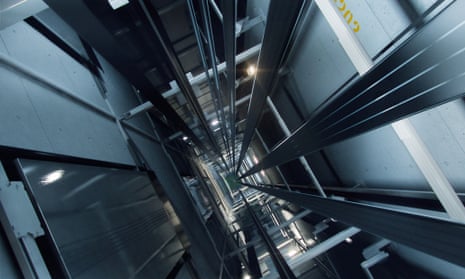Looking Into the Globe of Elevators: Usual Concerns Faced by Numerous Lift Systems
As we navigate with the vertical transport systems of contemporary structures, elevators stand out as a crucial component of our everyday lives. From hydraulic lifts to traction systems and machine-room-less layouts, each lift kind comes with its set of typical problems.
Hydraulic Lifts
Hydraulic lifts, usually preferred for low-rise buildings, use fluid stress to regulate the activity of the elevator automobile (lift repair companies). This device entails a hydraulic pump pushing oil right into a cylinder, causing the lift to relocate the preferred direction. While hydraulic elevators are understood for their smooth and silent operation, they do include their very own collection of usual concerns
One prevalent problem with hydraulic elevators is oil leakage. The seals in the hydraulic system can break over time, causing oil seepage. If left unaddressed, this not only produces a mess however can additionally influence the lift's efficiency. Furthermore, problems with the control system, such as defective valves or a malfunctioning pump, can cause interruptions in the elevator's movement.
Regular maintenance and prompt repairs are important to make sure the smooth functioning of hydraulic elevators. By dealing with these typical problems proactively, building proprietors can lessen downtime and guarantee the safety and efficiency of their vertical transportation system.
Grip Lifts
When considering vertical transport systems in structures, an additional typical type in addition to hydraulic elevators is the grip lift. Traction lifts operate using a system of ropes and weights that move the lift cars and truck by grasping onto the hoist ropes. This mechanism allows for smoother and faster upright transportation compared to hydraulic systems.
One of the common issues encountered by traction lifts is rope wear. The continuous activity of the ropes within the traction system can bring about tear and put on in time, possibly triggering the lift to malfunction or come to be risky for use. Normal examinations and maintenance of the ropes are important to make sure the elevator's appropriate performance and security.
Another problem that traction lifts may come across is associated to the control system. Troubles with the control system can cause issues such as irregular activity, hold-ups in reaction times, or also total closures. Routine testing and maintenance of the control system are crucial to stop such issues and make certain the lift's reliability.
Machine-Room-Less (MRL) Lifts

One of the vital parts of MRL lifts is the small gearless traction maker that is set up within the hoistway. This equipment successfully drives the elevator cars and truck without the need for large equipment discovered in conventional traction elevators. In addition, MRL lifts usually utilize a weight system to stabilize the learn the facts here now cars and truck, additional enhancing their power efficiency.
In spite of their advantages, MRL elevators may face difficulties associated with maintenance and repair service because of the restricted space for devices installation. Ease of access for servicing elements within the shaft can be restricted, needing specialized training for service technicians. Correct maintenance routines and normal inspections are critical to make sure the continued smooth procedure of MRL elevators.
Overloading and Weight Limitation Issues
Are elevators equipped to manage excess weight loads effectively and securely? Overwhelming and weight limitation problems are vital issues in elevator operations. Lift manufacturers layout raises with certain weight capabilities to guarantee guest safety and equipment durability. Going beyond these weight limits can result in various problems, including mechanical failings, hold-ups, and safety dangers.
When lifts are overloaded, it places too much pressure on the electric motor, cords, and various other parts, possibly triggering breakdowns or break downs. If they find excess weight, safety devices such as sensing units and overload sensors are in place to protect against lifts from moving. Additionally, surpassing weight limits can lead to increased power usage and deterioration on the lift system.
To mitigate overwhelming issues, constructing managers should plainly present weight limitations in lifts and educate residents on the importance of adhering to these limitations - lift repair companies. Normal upkeep checks by qualified specialists can likewise aid make certain that lifts are operating within risk-free weight specifications. By dealing with overloading and weight limit issues proactively, building proprietors can enhance elevator safety and security and effectiveness
Electric System Failings
Surpassing weight limitations in elevators can not just lead to mechanical issues but likewise possibly add to electric system failings within the lift framework. Electrical system failures are a vital problem in lift procedure, like it as they can create unanticipated shutdowns, malfunctions, or even safety and security hazards.
Routine maintenance and inspections are critical to determine and address prospective electrical problems quickly, guaranteeing the reliable and safe procedure of elevator systems. By adhering to weight limits and carrying out regular electrical system checks, building owners can minimize the threat of electric failings in lifts.
Conclusion

Hydraulic lifts, usually chosen for low-rise structures, use fluid pressure to control the activity of the elevator auto.When taking into consideration vertical transport systems in structures, another usual kind aside from hydraulic elevators is the traction lift. Traction elevators run utilizing a system of this website ropes and counterweights that move the elevator auto by clutching onto the hoist ropes. Unlike typical lifts that call for a separate device room to house the devices, MRL lifts integrate many of the elements within the shaft, getting rid of the need for a devoted machine room.In conclusion, lifts face usual problems such as hydraulic malfunctions, grip system failures, and electrical system problems.